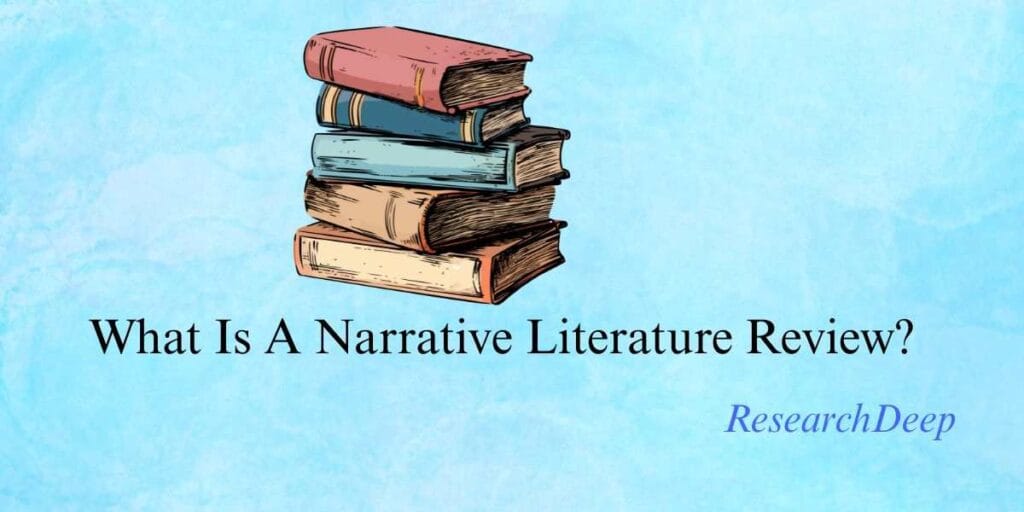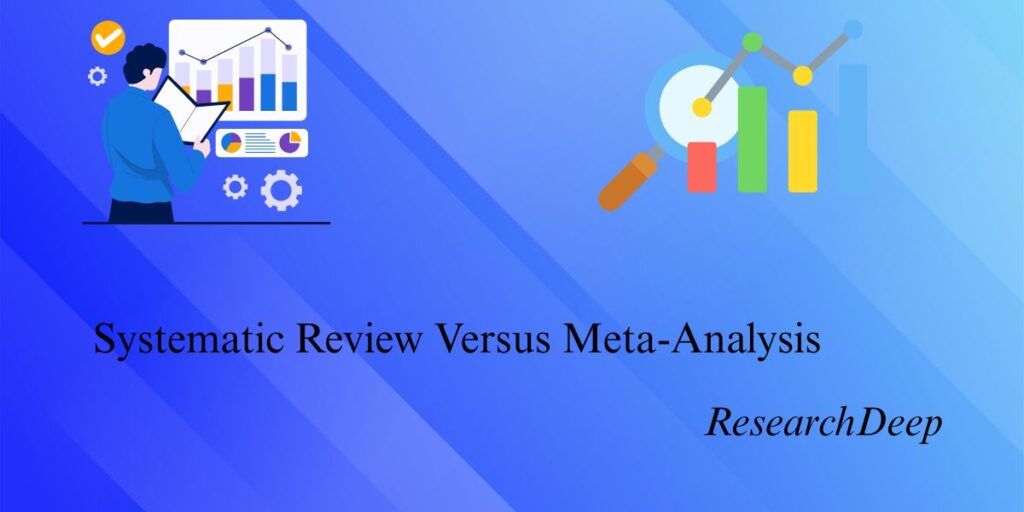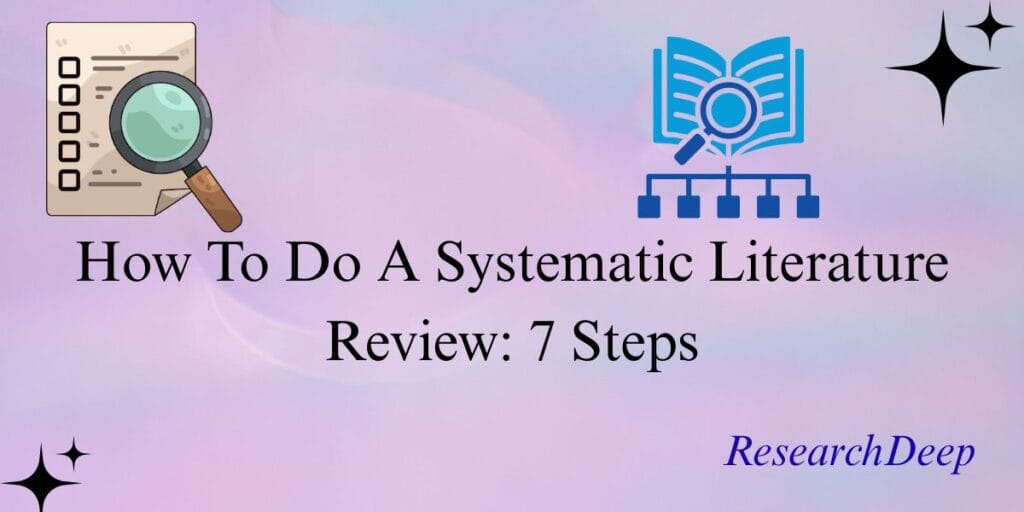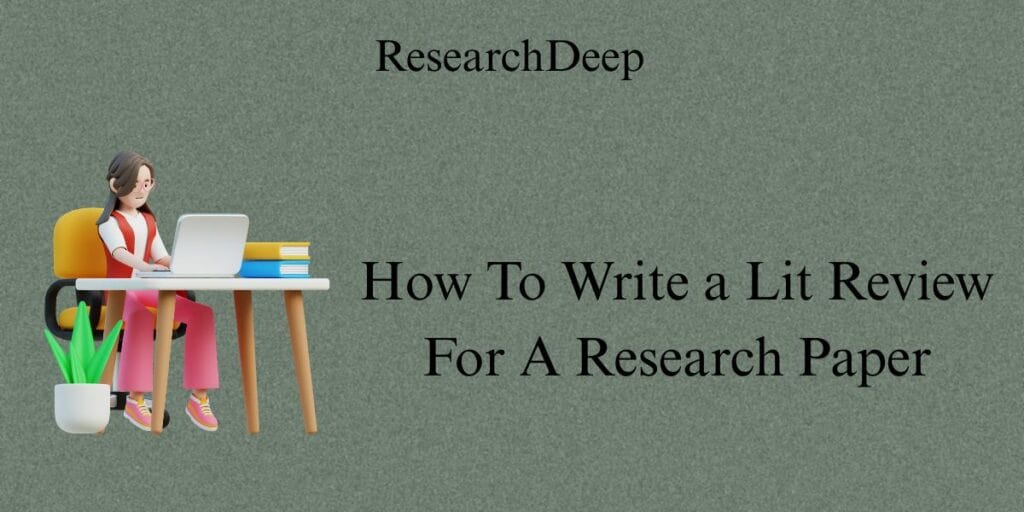Last updated on October 23rd, 2025 at 12:32 pm
Introduction
What is a narrative literature review? In graduate-doctoral research, a narrative literature review is more than a summary of past studies—it is a critical, interpretive synthesis that weaves together existing research into a coherent scholarly “story.”
This form of review plays an essential role in mapping the intellectual evolution of a topic, identifying primary debates and theories, and revealing research gaps in current understanding (Grant & Booth, 2009; Greenhalgh, Thorne, & Malter, 2018; Sukhera, 2022).
Unlike systematic reviews, which follow strict, predefined protocols and rely heavily on quantitative rigor, a narrative literature review offers flexibility and conceptual depth. It enables scholars to trace how knowledge has developed over time—linking theoretical frameworks, methodologies, and findings to uncover patterns and trends. The narrative approach values interpretation over enumeration, allowing the researcher to highlight why specific perspectives emerged, how disciplines interact, and what research questions remain unresolved (Wiley Online Library, 2024).resarch
At its core, a narrative review seeks to contextualize evidence rather than quantify it. It is particularly valuable when a research topic spans multiple disciplines or when available studies vary widely in research design and quality. For example, in exploring “the evolution of digital literacy in education,” a narrative literature review might integrate psychological theories of learning, sociological perspectives on technology adoption, and empirical classroom studies. Such a synthesis provides readers with a conceptually integrated view of the field—something that rigid, data-driven methodologies may overlook.
In essence, the narrative literature review functions as both a scholarly map and a reflective lens. It not only organizes what is known but also interprets why and how specific knowledge came to dominate a field. This interpretive freedom enables the reviewer to critique existing paradigms, propose new frameworks, and establish the foundation for further empirical or theoretical research (Green et al., 2006; Sukhera, 2022).
As Greenhalgh et al. (2018) argue, hierarchies that privilege systematic reviews over narrative ones are increasingly outdated. Each type serves a unique epistemological purpose: while systematic reviews aim to measure and compare, narrative reviews aim to understand and explain.
This makes the narrative review an indispensable tool in graduate-level inquiry, where the goal is not merely to aggregate evidence but to demonstrate critical thinking, scholarly interpretation, and theoretical insight.
Table of Contents
Definition and Purpose
A narrative (traditional) literature review synthesizes diverse, relevant sources to offer context, trace historical evolution, and develop concepts or theoretical integration (Baumeister & Leary, 1997; Grant & Booth, 2009).
It privileges interpretation and argumentation over exhaustive retrieval or quantitative aggregation (Paré et al., 2017; Green et al., 2006). (psychology.yale.edu)
When it excels: emerging or heterogeneous topics; theory-building; mapping intellectual debates; setting up future systematic reviews (Sukhera, 2022; Greenhalgh et al., 2018). (PMC)
5 Key Features of a Narrative Literature Review
A narrative literature review is distinguished by several defining features that make it conceptually rich, interpretive, and valuable for theory development and contextual understanding. Each characteristic influences how knowledge is synthesized, interpreted, and communicated.
1. Flexible and Interpretive
A defining strength of the narrative literature review is its flexibility—it allows researchers to tailor their approach to the complexity of a topic rather than being bound by a rigid, prescriptive methodology. Unlike systematic literature reviews, which use formal inclusion/exclusion criteria and database search protocols, narrative reviews emphasize conceptual synthesis and interpretive insight (Green, Johnson, & Adams, 2006; Sukhera, 2022).
This means the author can select type-specific websites for research based on their theoretical relevance, historical influence, or conceptual value rather than methodological uniformity. For instance, a scholar exploring “the evolution of leadership theories in education” may combine early foundational models (e.g., trait theories from the 1950s) with modern transformational or distributed leadership frameworks to illustrate intellectual shifts over time.
The interpretive freedom here allows authors to connect ideas creatively and critically — to highlight contradictions, map theoretical transitions, and propose new conceptual linkages that might otherwise remain buried in fragmented literature. However, this same interpretive latitude increases the need for transparency to minimize bias.
2. Broad Scope
Narrative reviews often have a broader scope than systematic or scoping reviews. They are not limited to a single methodology or study type but instead integrate findings from multiple disciplines, academic databases and search engines, epistemologies, or methodological traditions (Grant & Booth, 2009; Ohio State University Guide, 2023).
This breadth allows researchers to build holistic perspectives on complex or multidisciplinary issues.
For example, a review of climate change communication might draw from environmental science, psychology, sociology, and political science to capture how messages influence behavior across contexts.
The implication is that a narrative review can address research questions that are too conceptually diffuse for a purely systematic approach. It situates knowledge in a wider intellectual and historical frame, identifying patterns and influences that cross disciplinary boundaries.
However, the trade-off is that this inclusivity may lead to selectivity bias if the rationale for including or excluding specific fields is not explicitly stated. Thus, clarity about the review’s boundaries (e.g., “focus limited to English-language publications from 2000–2023”) enhances credibility.
3. Thematic Organization
Rather than summarizing studies chronologically or method-by-method, narrative reviews are typically organized by themes, concepts, or debates within the literature (Teachers College, Columbia University, 2024; ATLAS.ti, 2023).
This thematic synthesis helps readers see conceptual relationships, contradictions, and developments. For instance, a narrative review on remote work and productivity might be structured around three dominant themes:
- Organizational trust and autonomy,
- Digital communication and collaboration, and
- Employee well-being and work–life balance.
This thematic clustering transforms the review from a mere summary into a coherent interpretive argument, where each section represents a conceptual “lens” through which the field is examined.
Such an organization also enhances readability and critical depth—it tells a story of how research findings interact, contrast, or evolve, allowing authors to infer broader theoretical implications or highlight unresolved tensions.
4. Subject to Bias and Low Reproducibility
Because narrative reviews do not follow standardized, replicable search and selection protocols, they are inherently more prone to bias (Paré, Trudel, Jaana, & Kitsiou, 2017; Cleveland Clinic Library Guide, 2025).
Bias may arise from several sources:
- Selection bias: favoring literature that supports the author’s viewpoint.
- Confirmation bias: overemphasizing results that align with dominant theories.
- Interpretation bias: framing studies through the author’s conceptual lens.
Unlike systematic reviews—where another researcher could replicate the process and reach the same dataset—a narrative review’s reproducibility is low because it depends on individual judgment.
For instance, two scholars reviewing “AI ethics in healthcare” could reach different conclusions if one prioritizes philosophical literature and another emphasizes empirical clinical studies. Both are valid, but transparency about why and how sources were selected is essential for scholarly rigor.
Many experts therefore recommend including a methodological note (Green et al., 2006) detailing databases searched, keywords used, and inclusion rationale, even if not as rigid as PRISMA criteria. This practice enhances trustworthiness without sacrificing interpretive richness.
5. Still Valuable and Increasingly Recognized
Despite criticism that narrative reviews are “subjective” or “lower” in the evidence hierarchy, recent scholarship emphasizes that they hold unique scholarly value (Greenhalgh, Thorne, & Malterud, 2018). Narrative reviews excel at synthesizing conceptual, theoretical, and historical insights—aspects that quantitative aggregation alone cannot capture.
For example, in medical education and public health, narrative reviews are now used to contextualize evidence hierarchies and bridge the gap between research findings and practice by explaining why specific interventions succeed in some settings but not others (Greenhalgh et al., 2018).
This resurgence reflects an understanding that knowledge synthesis is not purely mechanical but also interpretive and context-sensitive. A well-executed narrative review—transparent, critical, and reflexive—can shape theoretical frameworks, redefine debates, and inform future systematic reviews.
In essence, the narrative review remains an indispensable scholarly form: less about quantifying truth and more about understanding meaning, evolution, and relationships among ideas.
Recommended Reads
21 Types Of Research In Research Methodology
Definition Of Research Methodology By Authors
Systematic Review Versus Meta-Analysis
Method (A Practical, Transparent Approach)
Although narrative literature reviews are flexible by nature, they still benefit from a structured yet interpretive framework. Following clear steps ensures rigor, transparency, and reproducibility—qualities often associated with systematic reviews but adaptable to a narrative approach.
The process outlined below represents a practical model synthesized from leading sources (Grant & Booth, 2009; Green et al., 2006; Paré et al., 2017; Sukhera, 2022).
1. Define Scope and Questions
A strong narrative review begins with a clearly defined purpose and scope. The author must articulate the central question(s), conceptual boundaries, and intended audience (Grant & Booth, 2009).
For example, a review exploring “the role of emotional intelligence in nursing leadership” must specify its focus—whether it seeks theoretical synthesis, historical evolution, or conceptual clarification. This step also sets the temporal, disciplinary, and linguistic parameters (e.g., English-language studies from 2000 to 2024).
Defining scope avoids the trap of “conceptual sprawl,” where unrelated studies are included simply because they seem interesting. In narrative reviews, clarity of intent substitutes for procedural rigidity.
2. Search Broadly and Iteratively
The literature review in a narrative review is deliberately broad and iterative. Rather than applying rigid inclusion filters, the author uses multiple databases (e.g., Scopus, Web of Science, Google Scholar) and snowballing techniques—tracking citations from key works to identify influential or foundational sources (Paré et al., 2017).
This approach captures the breadth and diversity of perspectives essential for conceptual synthesis. For instance, a narrative review on “digital transformation in higher education” may include empirical studies, theoretical papers, government reports, and even seminal essays that shaped the discourse.
Because this process cannot be exactly replicated, authors should document search logic transparently—listing databases, key terms, and decision rationales to enhance credibility without imposing systematic rigidity.
3. Select Key Sources
The selection phase emphasizes conceptual centrality rather than representativeness (Green et al., 2006). Sources are chosen for their theoretical influence, methodological rigor, and relevance to the research question.
For example, in a review on “organizational resilience,” the author may prioritize landmark works such as Coutu (2002) or Hollnagel (2011), even if newer studies exist, because these texts anchor major theoretical frameworks.
This process acknowledges the reviewer’s intellectual judgment—a legitimate and valuable tool when wielded transparently. Exclusion decisions (e.g., “excluded engineering-only studies due to focus on organizational psychology”) should be stated briefly to signal methodological integrity.
4. Synthesize Thematically
Unlike systematic reviews that summarize study-by-study, a narrative review synthesizes ideas thematically. This means grouping findings by concepts, debates, or frameworks rather than chronology (Teachers College, Columbia University, 2024).
Thematic synthesis allows patterns, contradictions, and relationships to emerge naturally. For instance, a review on “sustainability in business education” might be organized around three themes:
- Integration of sustainability into curricula,
- Pedagogical approaches (experiential vs. theoretical), and
- Institutional barriers to implementation.
Using tools such as matrices, mind maps, or concept networks can visually represent these linkages and support a cohesive narrative argument.
5. Critique and Reflect
High-quality narrative reviews go beyond description—they offer critical evaluation. This step involves identifying gaps, tensions, biases, and methodological weaknesses across studies (Baumeister & Leary, 1997).
For example, a review might note that most research on “online learning engagement” relies on self-reported measures, leading to overestimated participation rates. The author can then discuss how future studies might incorporate behavioral data or mixed-method designs.
Reflection also extends to self-reflexivity: the reviewer acknowledges how their disciplinary perspective shapes interpretation.
This meta-awareness elevates a narrative review from a literature summary to a scholarly argument.
6. Conclude and Set an Agenda
Every narrative review should culminate in a synthesized conclusion that consolidates findings, articulates contributions, and proposes directions for future research (Sukhera, 2022).
A well-crafted conclusion may:
- Identify emerging paradigms or theoretical gaps,
- Suggest underexplored variables or populations,
- Outline methodological improvements (e.g., need for longitudinal or cross-cultural studies).
For instance, a narrative review on “AI in academic writing” might conclude that while most research focuses on plagiarism detection, fewer studies examine ethical integration of AI-assisted drafting tools—a clear agenda for future inquiry.
7. Good Practice: Include a Short Methods Note
Although narrative reviews are less formalized than systematic ones, including a brief note on research methods enhances credibility and transparency (Green et al., 2006).
This note can succinctly describe:
- Databases searched (e.g., Scopus, Google Scholar)
- Timeframe covered
- Keywords and Boolean operators used
- Inclusion/exclusion rationale (e.g., peer-reviewed English-language studies)
Such a statement signals rigor and honesty, distinguishing scholarly narrative reviews from purely opinion-based essays.
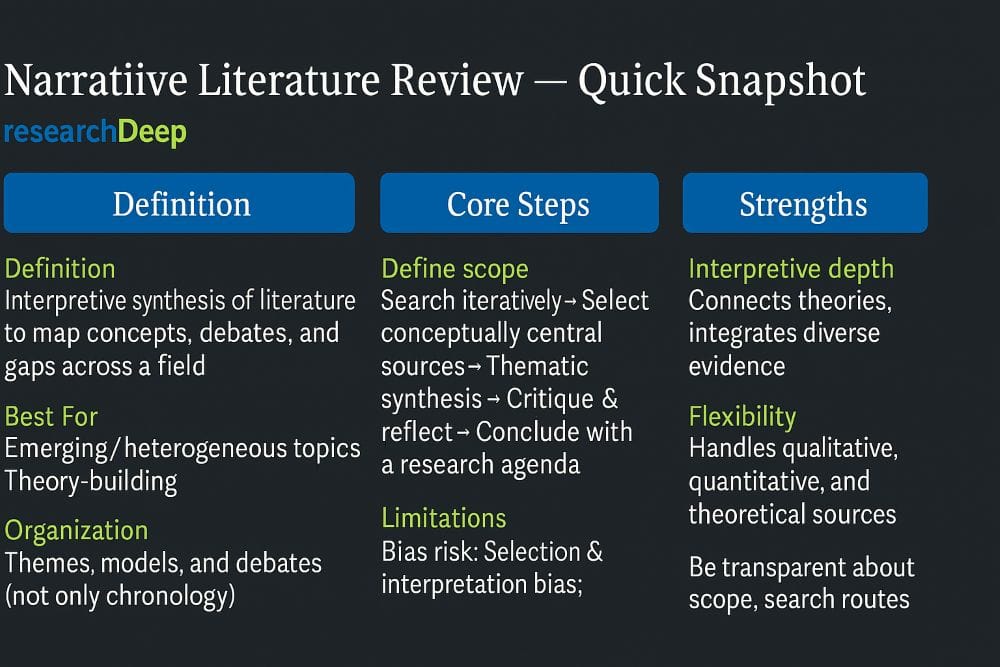
Strengths and Limitations
Strengths
1. Deep Interpretation and Theoretical Integration
Narrative reviews enable interpretive depth—authors can compare, contrast, and merge theories in ways that quantitative syntheses cannot (Baumeister & Leary, 1997). For example, reviewing diverse perspectives on motivation in education allows integration of behaviorist, cognitive, and humanistic theories into a single conceptual model.
2. Suitable for Mixed or Heterogeneous Evidence
They accommodate mixed forms of evidence—qualitative, quantitative, conceptual, and even policy-based. This inclusivity makes them ideal for areas with limited empirical data or emerging frameworks (Sukhera, 2022).
3. Ideal for Field Mapping and Theory Building
By connecting fragmented findings and tracing intellectual lineages, narrative reviews help scholars map the evolution of a field and generate new hypotheses. In disciplines where theory precedes measurement (e.g., sociology, education), this is invaluable.
Limitations
1. Higher Selection and Interpretation Bias
Because narrative reviews rely on author judgment, they are vulnerable to bias—authors might unconsciously favor studies supporting their perspectives (Paré et al., 2017). Mitigation requires reflexivity and transparent documentation of decisions.
2. Lower Reproducibility
Unlike systematic reviews that can be replicated through explicit search strategies, narrative reviews are idiosyncratic. Two reviewers may produce different syntheses from the same field due to divergent interpretive approaches.
3. Misconception of Inferior Rigor
Narrative reviews are often perceived as “lower” in the evidence hierarchy—an outdated assumption increasingly challenged by scholars (Greenhalgh, Thorne, & Malterud, 2018). Modern evidence-based paradigms now acknowledge the complementary role of narrative synthesis in conceptual and contextual understanding.
Narrative vs. Systematic Reviews (Comparisons)
| Aspect | Narrative Review | Systematic Review |
|---|---|---|
| Primary aim | Contextualize, theorize, and map debates. | Answer a focused question with minimal bias. |
| Search/Selection | Iterative, judgment-based. | Pre-specified, documented protocol (e.g., PRISMA) |
| Scope | Broad, heterogeneous evidence. | Narrow; strict eligibility. |
| Synthesis | Thematic, discursive. | Structured; may include meta-analysis. |
| Bias control | Lower relies on reflexivity. | Higher via explicit methods. |
| Reproducibility | Lower | Higher |
Sources: Grant & Booth (2009); Paré et al. (2017); Cleveland Clinic & Alberta review-type guides. (Wiley Online Library)
Writing Tips (for Theses/Articles)
1. State your interpretive stance; add a brief methods note. (Green et al., 2006) (PMC)
2. Balance breadth with conceptual centrality—focus on works that anchor debates. (Baumeister & Leary, 1997) (psychology.yale.edu)
3. Use thematic headings and signposting to guide the reader. (Teachers College LibGuide) (tc-columbia.libguides.com)
4. Close with gaps and a forward agenda connected to your research question. (Sukhera, 2022) (PMC)
FAQs
Is a narrative review qualitative or quantitative?
Primarily used for questionnaires in qualitative/interpretive research, it may describe quantitative results but doesn’t aggregate them statistically like a meta-analysis (Paré et al., 2017). (NCBI)
When should I choose a narrative review instead of a systematic review?
When the research question is broad, the literature is heterogeneous or emergent, or you aim to build theory and map debates rather than estimate effect sizes (Sukhera, 2022; Greenhalgh et al., 2018). (PMC)
How do you write a narrative literature review?
Define scope, search iteratively, select conceptually central studies, synthesize by themes, critique methods and findings, and end with gaps/agenda—include a short methods note for transparency (Green et al., 2006; Baumeister & Leary, 1997). (PMC)
Conclusion
A narrative literature review is not an “inferior” cousin to the systematic review; it is a distinct synthesis genre optimized for interpretation, theory-building, and field mapping. When researchers ask broad or evolving questions, must weave together heterogeneous evidence, or wish to trace the history of ideas, the narrative format is ideal. Its flexibility supports nuanced comparisons across traditions, methods, and contexts; its thematic organization helps readers see patterns, tensions, and gaps.
That same flexibility, however, elevates the risks of selection bias and low reproducibility. The remedy is transparent reporting—briefly describing where you searched, how you selected, and what you excluded. Done well, a narrative review clarifies conceptual landscapes, reframes debates, and sets a credible research agenda that subsequent systematic reviews or empirical studies can precisely test. In short, for the right aims, narrative reviews are rigorous, practical, and indispensable to scholarly progress (Baumeister & Leary, 1997; Green et al., 2006; Greenhalgh et al., 2018; Sukhera, 2022). (psychology.yale.edu)
Key Takeaways
- Narrative reviews synthesize literature interpretively to map concepts, debates, and gaps.
- Best for emerging/heterogeneous topics and theory-building.
- Organize by themes/debates, not just chronology.
- Include a short methods note (databases, years, inclusion logic) for credibility.
- Finish with clear gaps & a forward agenda.
References (APA)
- Baumeister, R. F., & Leary, M. R. (1997). Writing narrative literature reviews. Review of General Psychology, 1(3), 311–320. (psychology.yale.edu)
- Grant, M. J., & Booth, A. (2009). A typology of reviews: An analysis of 14 review types and associated methodologies. Health Information & Libraries Journal, 26(2), 91–108. (Wiley Online Library)
- Green, B. N., Johnson, C. D., & Adams, A. (2006). Writing narrative literature reviews for peer-reviewed journals: Secrets of the trade. Journal of Chiropractic Medicine, 5(3), 101–117. (PMC)
- Greenhalgh, T., Thorne, S., & Malterud, K. (2018). Time to challenge the spurious hierarchy of systematic over narrative reviews? European Journal of Clinical Investigation, 48(6), e12931. (PMC)
- Paré, G., Trudel, M.-C., Jaana, M., & Kitsiou, S. (2017). Chapter 9: Methods for literature reviews. In Handbook of E-health Evaluation (NIH/NLM Bookshelf). (NCBI)
- Sukhera, J. (2022). Narrative Reviews: Flexible, rigorous, and practical. Academic Medicine, (Open-access perspective on PMC). (PMC)
- Teachers College, Columbia University. (2024). The Literature Review: Narrative Review (LibGuide). (tc-columbia.libguides.com)
- Cleveland Clinic Libraries. (2025). Types of Reviews (LibGuide). (library.aah.org)
- University of Alberta Libraries. (2025). What Kind of Review Should I Do? (Guide). (guides.library.ualberta.ca)
- The University of Texas Libraries. (2025). What is a literature review? (Guide). (guides.lib.utexas.edu)
